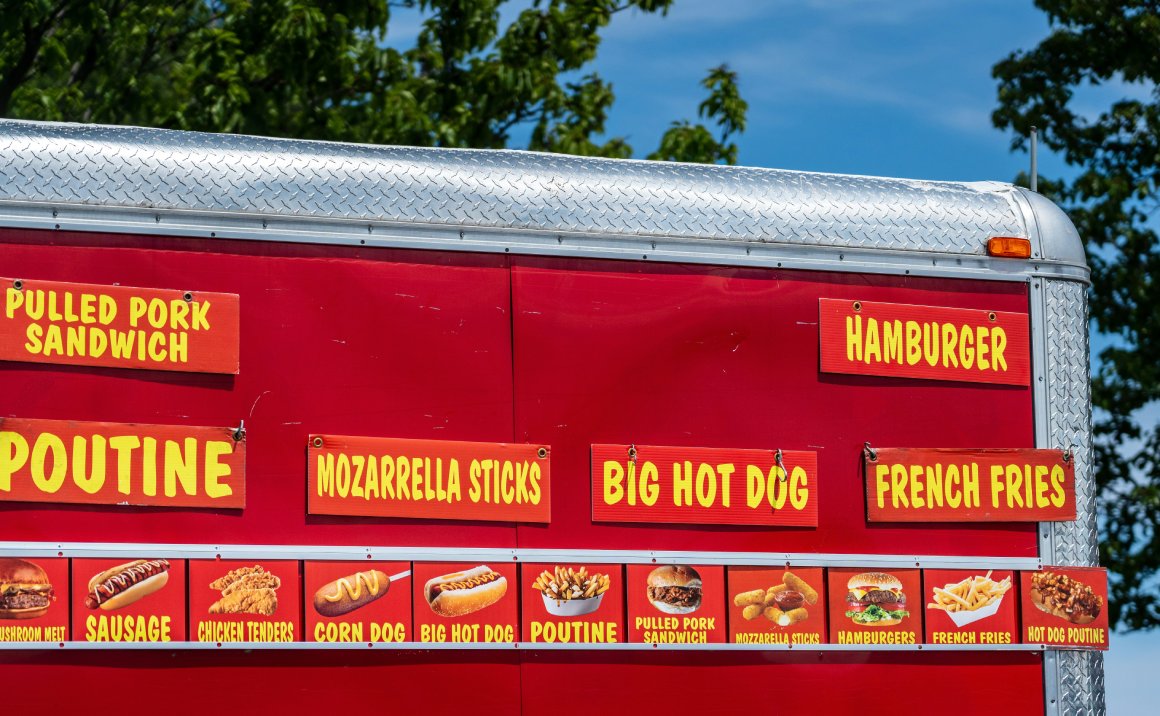
Menu Planning to Minimize Food Waste: A Chef’s Guide to Streamlining Your Food Truck’s Offerings
This post is part of a regular series. Click here to start at the beginning.
Managing inventory is one of the most critical aspects of running a successful food truck or restaurant. Poor inventory management often leads to over-ordering, spoiled ingredients, and higher food costs—all of which contribute to food waste. By mastering your inventory, you can reduce waste, lower costs, and ensure that your ingredients stay fresh and are used efficiently.
In this post, we’ll dive into practical strategies for effective inventory management, providing clear examples and actionable tasks to help you cut down on waste.
1. Implement a First-In, First-Out (FIFO) System
A basic yet highly effective strategy for managing food waste is the First-In, First-Out (FIFO) method. This system ensures that older stock is used before newer stock, reducing the risk of ingredients expiring or going bad.
Actionable Task:
- Organize Storage by Expiry Date: Label all perishable ingredients with their delivery date and arrange them so that the oldest items are at the front. Train your staff to always use the oldest stock first.
Example: In a taco truck, tortillas delivered earlier in the week should be stored in front, ensuring they are used before any new deliveries of tortillas are added to the stock.
Expected Outcome: By implementing the FIFO system, you can reduce spoilage and food waste by up to 20%, ensuring that older ingredients are used up before they expire.
Investment Level: Low – This requires time and effort to organize storage, but no significant financial investment.
2. Track Inventory Regularly
One of the most common reasons for food waste is losing track of what’s in stock. Regular inventory checks help you stay on top of what you have, what’s running low, and what’s about to expire, ensuring you’re not over-ordering or letting ingredients go bad.
Actionable Task:
- Perform Weekly Inventory Checks: Designate a specific day each week to review your stock. Record what’s on hand, check expiry dates, and note any ingredients that are close to expiring. Use this data to inform your ordering decisions.
Example: A smoothie truck might check its inventory of fruits, ice, and milk every Monday to ensure that nothing is nearing its expiration date and to prevent over-ordering.
Expected Outcome: Regular inventory checks can reduce over-ordering and prevent stock from sitting unused, cutting food waste by 15-25%.
Investment Level: Low – This strategy only requires time and consistency in checking stock regularly. Digital tools or inventory management software can also streamline this process.
3. Use Inventory Management Software
Incorporating technology into your inventory management can help you track stock levels, monitor usage, and generate reports that highlight which ingredients are being under- or overused. Inventory software can alert you when stock is running low or nearing its expiration date, making it easier to stay on top of your supplies.
Actionable Task:
- Invest in Inventory Management Software: Implement software that allows you to track your stock in real time. Choose software that integrates with your POS system, so you can monitor sales and inventory simultaneously.
Example: A burger truck uses inventory software that tracks the amount of meat, buns, and condiments in stock. When a burger is sold, the software automatically updates the inventory count, ensuring you always know what’s available.
Expected Outcome: Inventory management software can improve accuracy, reduce human error, and cut food waste by up to 30% by ensuring you never over-order or let stock expire unnoticed.
Investment Level: Medium – Inventory software typically costs between $50 and $200 per month, depending on the size of your operation and the features you need.
4. Monitor Ingredient Usage and Sales Patterns
By analyzing sales patterns and ingredient usage, you can identify which ingredients are being over-ordered or underutilized. This helps you fine-tune your ordering process to match real customer demand, reducing the likelihood of excess stock and waste.
Actionable Task:
- Track Ingredient Usage: Use your sales data to see which menu items are most popular and which ingredients are used most often. Adjust your ordering habits based on actual usage, not just estimated demand.
Example: A taco truck might notice that certain ingredients, like guacamole or sour cream, are used more often on weekends. They can adjust their orders to stock up on these ingredients before high-demand periods, preventing shortages and waste.
Expected Outcome: By aligning your inventory with real demand, you can reduce unnecessary purchases and cut down on waste by 10-15%, while also avoiding shortages of high-demand items.
Investment Level: Low – This strategy relies on analyzing existing sales data and adjusting orders based on patterns. No major financial investment is required.
5. Avoid Bulk Ordering Unless Necessary
While it’s tempting to buy ingredients in bulk to save money, this can backfire if you can’t use the ingredients before they spoil. Bulk orders are best reserved for ingredients with a long shelf life or items that you know you’ll use quickly.
Actionable Task:
- Be Selective About Bulk Orders: Only purchase ingredients in bulk if you’re confident they’ll be used up before their expiration date. Focus on non-perishable or slow-to-expire items, such as grains, spices, or frozen products.
Example: A BBQ truck might order non-perishable items like dry rubs and spices in bulk, but avoid buying large quantities of perishable produce that could spoil if not used quickly.
Expected Outcome: By being selective about bulk orders, you can reduce the risk of spoilage and save 10-20% on food costs by avoiding over-purchasing.
Investment Level: Low – This strategy simply involves adjusting your purchasing decisions to avoid bulk orders for highly perishable ingredients.
Conclusion: Smart Inventory Management is Key to Reducing Food Waste
Managing your inventory effectively is one of the most powerful tools in reducing food waste, cutting costs, and ensuring that your food truck or restaurant operates smoothly. By implementing systems like FIFO, tracking your stock regularly, and investing in inventory management software, you can stay on top of your supplies and avoid costly waste.
This proactive approach to inventory management will not only help reduce the amount of food that ends up in the trash but also improve your profitability by ensuring you’re not over-ordering or letting valuable ingredients spoil.
This post is part of a regular series. Please use these links to view the rest of the series in order.
Designing the Inside of Your Food Truck for Maximum Efficiency
How to Design the Interior of Your Food Truck for Optimal Workflow and Efficiency When…
How to Build Customer Engagement and Retention for Your Food Truck
The Complete Guide to Customer Engagement and Retention for Food Truck Owners Customer engagement and…
SumUp and Zettle – Affordable, Mobile Payment Processors for Food Trucks
Comparing SumUp and Zettle: Which Mobile Payment Processor is Best for Your Food Truck? When…




